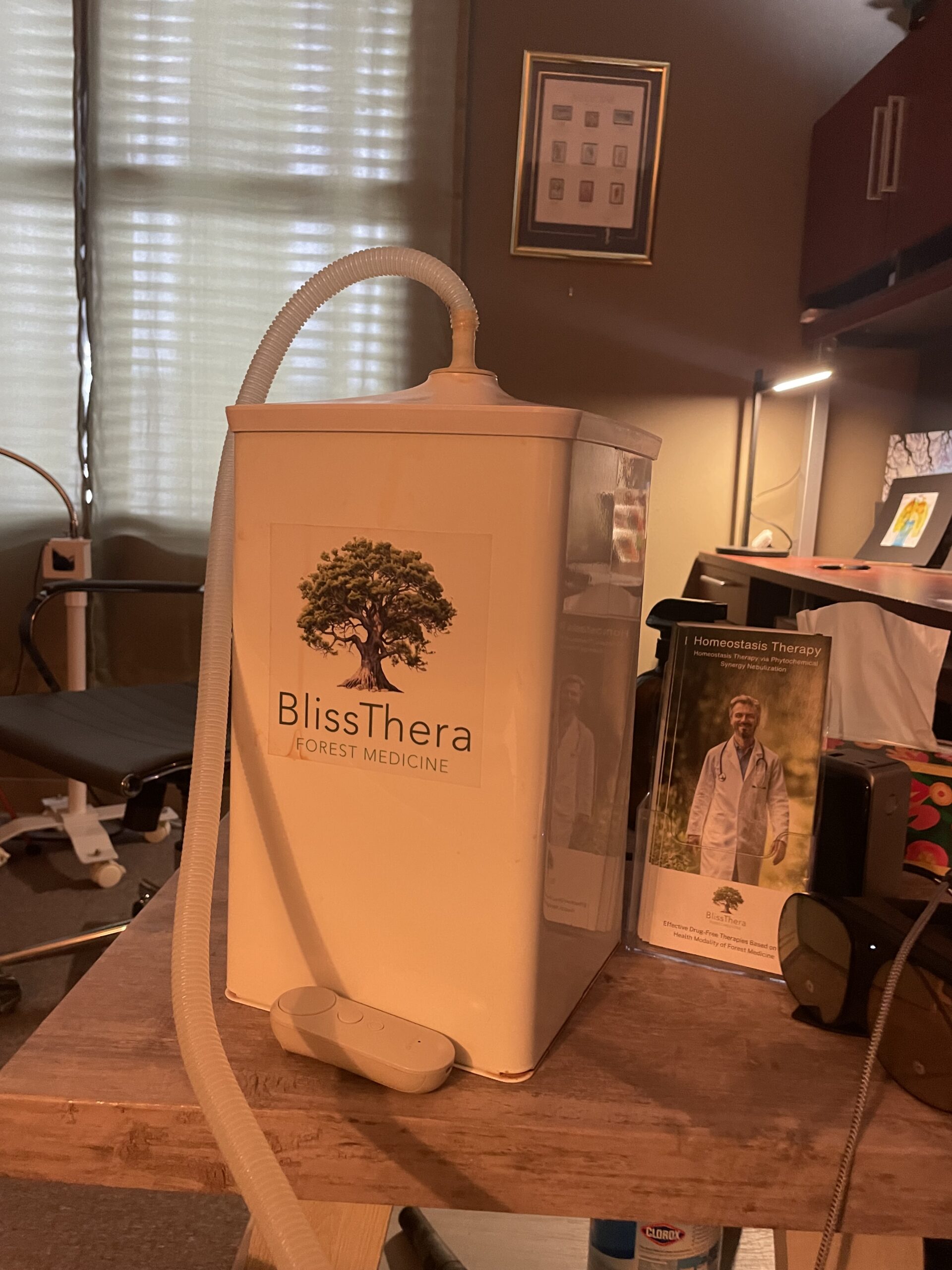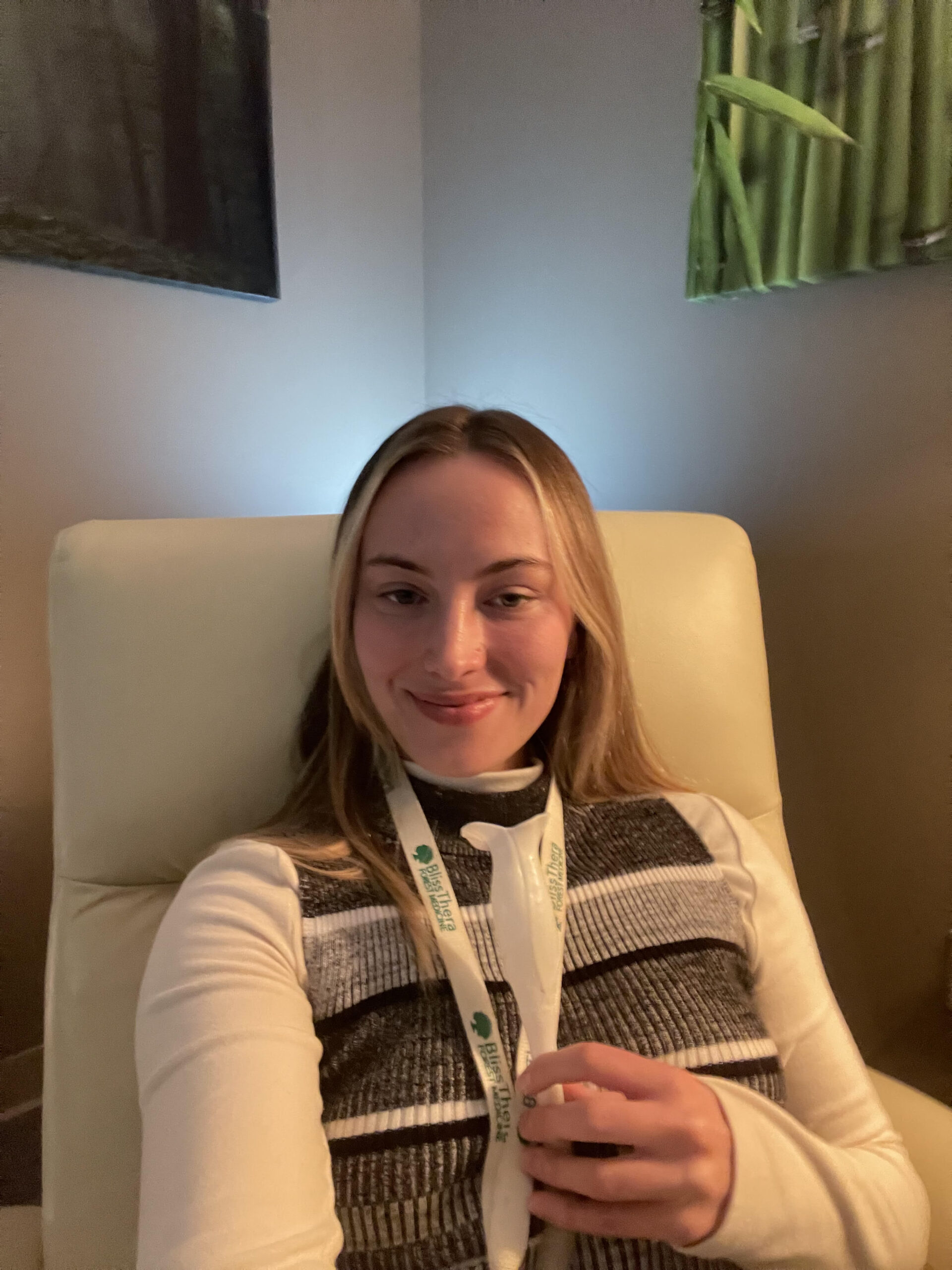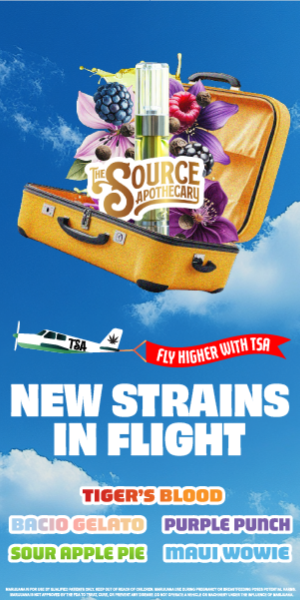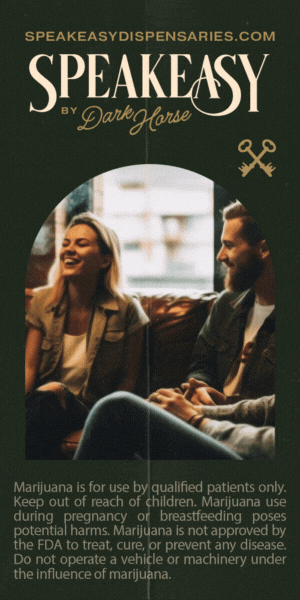Why I’m Choosing to be a Guinea Pig for Medical Science
I’m volunteering my health data to local practitioner Dr. Brian Nichol to contribute to research on connective tissue disorders.
By Isabella Wisinger

I met Dr. Brian Nichol at the Cannabis & Wellness Expo in August of 2024. When I later interviewed him for the digital Arkansas Cannabis Times, Dr. Nichol and I connected over our shared love of nature and biology, discussing everything from Japanese forest bathing (the ideology behind his groundbreaking BlissThera device) to the theory of endocannabinoid insufficiency syndrome. One might say we “nerded out”. Eventually, toward the close of the interview, we landed on the subject of why exactly I’m so interested in his work. It’s not just because I work for the Arkansas Cannabis Times– it’s because I pride myself on investigating and trying as many new wellness therapies as possible.
Since I was a teenager, I’ve struggled with myriad symptoms that seemed to emerge out of nowhere, with no explanation provided by the doctors I consulted. It wasn’t until I received a diagnosis of Ehlers-Danlos Syndrome (EDS) several years into my medical journey that anything made sense. EDS is a hereditary connective tissue disorder that presents itself in many different ways depending on individual biology, and is classified by which systems of the body it affects most. EDS exists on a spectrum and is closely linked with other comorbid conditions like Hypermobility Spectrum Disorder, Postural Orthostatic Syndrome (POTS), Mast Cell Activation Syndrome (MCAS), fibromyalgia, autism, and many others.
Dr. Nichol proposed that I come into his clinic and try the BlissThera device. He developed the technology with another medical inventor to treat health conditions with plant medicine, with the ultimate goal of helping people discontinue prescription medications. We made a symbiotic arrangement in which I could test the device for free and write about it, while he collected data about how the BlissThera sessions impacted my symptoms. He had not previously treated anyone with EDS, and as a dedicated researcher, he extends similar opportunities to patients with unstudied conditions in order to refine his treatment protocols and make the medicine as effective as possible. Dr. Nichol shared with me that one of his very first patients, a military veteran, had a similar arrangement while he was creating and then modifying his protocol for treating PTSD (that veteran has since resolved the symptoms of his PTSD, was able to return to his normal family life, and now comes in every so often for a “tune-up” treatment.)

What appealed to me about trying the BlissThera device, which administers carefully curated terpenes and cannabinoids via breathing tube, was its non-invasive nature. Having already attempted painful procedures like steroid shots, PCP, and prolotherapy to strengthen my connective tissues, the concept of simply inhaling a natural plant medicine was infinitely more attractive.
I met with Dr. Nichol the afternoon of December 18, 2024 for my intake appointment. Here’s the play-by-play:
0 Minutes
I visit with Spencer, the front desk attendant, who is exceptionally welcoming. Dr. Nichol escorts me back to the BlissThera room and we quickly go over how the visit will play out. He gets a list of my diagnoses, current medications and family history, all the usual stuff. We cover the main symptoms I’m hoping to improve: muscle spasms, migraines, joint subluxations, nerve pain, cervical instability, chronic fatigue, dysautonomia, GI disturbances, and the stress brought on by managing all of those issues. He also has me define a tangible goal for these sessions, which I appreciate, by asking “What is one thing you can’t currently do, but would like to do again, if these treatments are beneficial?” I tell him I’d like to be able to go roller skating with my friends without getting injured. (At first I said I wanted to take up running again, but he said that was unlikely and asked me to pick something less taxing on the joints.)
15 Minutes
Dr. Nichol asks if I am comfortable being recorded for a few minutes and explaining to the camera why I’m visiting the clinic. His son Sam brings in his videography equipment and sets up two bright backlights along with his camera. I sit with my hands clasped and try to relay my entire medical history in a concise, chronological manner without getting bogged down in the details. Dr. Nichol and Sam are attentively listening. No one jumps in to prompt me with a question, as they initially said they might. I talk for about 5 minutes, and then the interview portion of the appointment is a wrap.
30 Minutes
Sam leaves the room, and Dr. Nichol shows me how to “wear” the device by looping a cord around my neck that’s attached to the breathing tube, which is attached to the machine containing all the terpene and cannabinoid substances. The plastic end of the tube is shaped like an open flower, and I let it rest against my sternum while Dr. Nichol explains that he’ll be in another room monitoring the treatment’s progress, and that if I need to stop or pause at any time to holler at Spencer, who is right outside working. He says most people have no adverse effects, but in rare cases an allergic reaction to one of the terpenes can occur. Before he goes into the other room, he lets me know that he’ll be running several programs that will take around an hour: the programs for inflammation, fibromyalgia, neurological issues, mood, and a few others he thought might target the symptoms we discussed.

45 Minutes
The treatment begins! I resolve to do nothing but take deep breaths from the tube (except for writing down the occasional note.) Immediately, there’s a strong smell of lemongrass and mint. It turns sweeter several minutes later- becoming more like anise or licorice. I infer that this means the next program has been activated, triggering the release of new cannabinoids and terpenes from the machine.
60 Minutes
Dr. Nichol walks in to check that I’m tolerating the treatment well. I let him know that my baseline anxiety has lowered. My mind relaxes and wanders freely while I chill out in the big armchair I’m perched in. The BlissThera switches to a new program that smells like pine needles and eucalyptus.
75 Minutes
The aroma emanating from the BlissThera device becomes lemony again. When I walked into the clinic, I had a headache and a spasm in the right side of my jaw preventing me from opening my mouth beyond 20 degrees. Thirty minutes into the session, the headache has slipped away, and most of my muscles have relaxed (besides the stubborn jaw). The pain dulls noticeably. At some point, my ears pop, signaling that there’s been a change in interstitial pressure as well.
90 Minutes
There’s an unclenching sensation in my diaphragm- I hadn’t even realized I was holding tension there. The neck pain and stiffness I went into the clinic with have decreased dramatically.
105 Minutes
I’m experiencing a strong sedative effect, which I was forewarned about. Dr. Nichol lets me know that some people are more sensitive to the compounds than others. There are random muscle twitches happening across-body, which concerns me a little, but not enough to interrupt the flow of the treatment.
120 Minutes
Before the BlissThera powers down, it releases one last medley of smells that invoke thoughts of cinnamon sticks and hibiscus flowers. Dr. Nichol sends me on my way with a complementary elixir that he directs me to take twice a day, sublingually. When asked what’s in the elixir, he tells me that it’s a proprietary blend of terpenes and cannabinoids, but can’t disclose the specifics to protect trade secrets. I am assured that it’s all natural, though.
FIRST IMPRESSION
After trying Dr. Nichol’s method myself, I’m convinced that while it’s unlikely to “cure” my genetic condition, it’s worth pursuing as an alternative therapy and has potential as a long-term method of symptom management. I’ll be continuing to visit Dr. Nichol at his Integrative Pain Management Clinic to fully test the process and provide the data he needs to develop new protocols for more patients dealing with problems similar to mine.
It’s worth emphasizing the immediate relaxation effects of the BlissThera therapy. I also noticed that my stress management was improved throughout the week after my first treatment. I’d recommend giving the BlissThera a try to anyone dealing with stress or anxiety-related conditions. As for addressing muscular tension and spasms, the BlissThera was moderately impactful for me. I didn’t notice a change in the other symptoms discussed at the beginning of the appointment. Dr. Nichol shared that the benefits of the therapy compound over time, and consistent treatments are crucial for seeing better health outcomes.
I’ll need to complete the full regimen recommended by Dr. Nichol before drawing any conclusions, but I feel that this technology has promise for EDS patients, and I look forward to learning firsthand what his work can do for people with connective tissue disorders.



